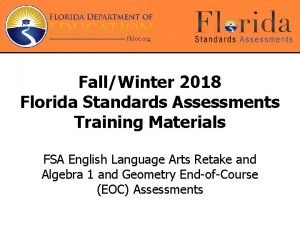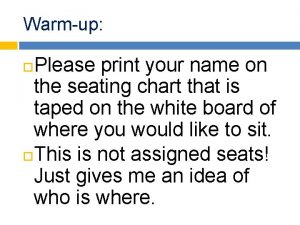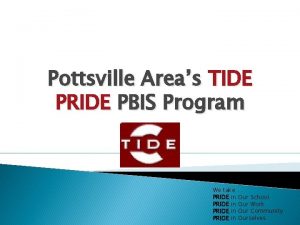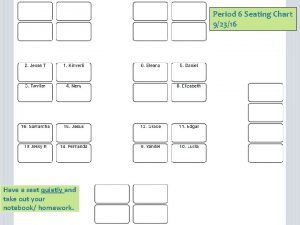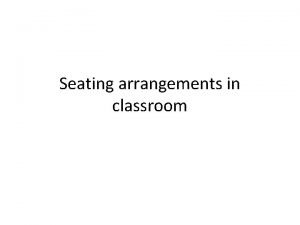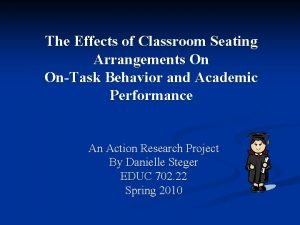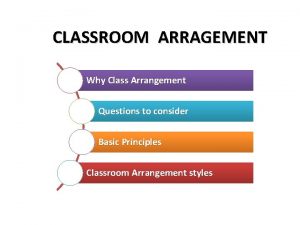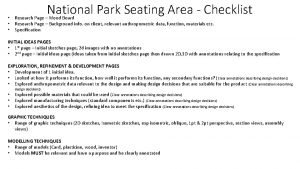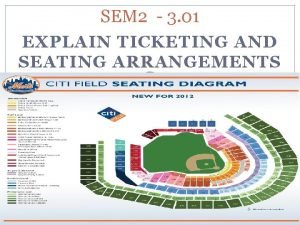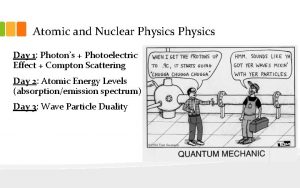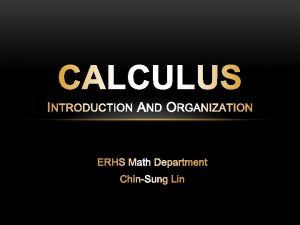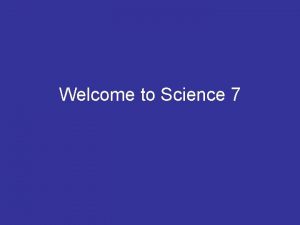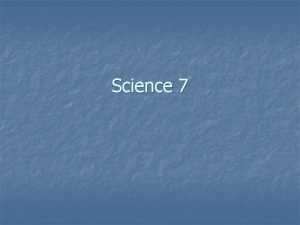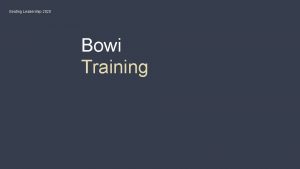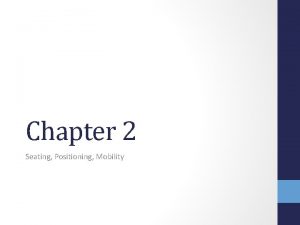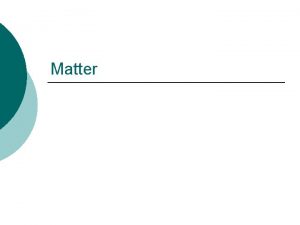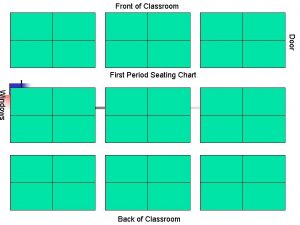The science of physics First Day Seating Chart















































- Slides: 47

The science of physics

First Day • • Seating Chart Introductions Syllabus Procedures

Second Day • • • Online Text Remind Handouts Safety Contract Safety Lecture

Third Day • Remind Text Option • Safety Lab Quiz Review • Safety Lab Quiz which can be completed as homework on Quizizz. com

4 th Day • Safety Hunt • Mathematics Basic Skill Assessment • Homework: Go to my Welcome web page. Select Physics I Chapter 1. 1 Notes and view the slides. Answer the Assessment Slides as they appear.

Objectives • Understand what the science of physics involves. • Generate and interpret graphs describing different types of motion using real-time technology (the Smart Cart).

Assessment 1. Which statement describes correctly the science of physics? A. Physics is the study of living things. B. Physics is the study of chemical bonds and processes. C. Physics is the study of medicines. D. Physics is the study of matter and energy.

Assessment Vocabulary: energy wave matter magnetism information electricity force atom frequency quantum physics Fill in the blanks: 2. In order for a car to stop, its brakes must apply a/an _______ to the wheels. 3. _______ is needed to do work, such as lifting a heavy mass.

Physics terms • position • velocity • acceleration • force • work • energy

What is physics? Physics is the science that explains how the physical universe works.

What is physics? Physics is the science that explains how the physical universe works. For example: Newton’s laws of motion can be used to describe the motion of a skydiver.

Why is physics important? Discoveries in physics have led to the development of nearly all human technologies.

Why is physics important? Discoveries in physics have led to the development of nearly all human technologies. Examples include electricity, cell phones, microwaves, and many more things you use every day.

What is physics about? Physics is the most basic of the sciences.

What is physics about? Physics is the most basic of the sciences. Physics describes: • the basic forces; • the nature of atoms and matter; and • the processes by which matter and energy interact.

How does physics relate to chemistry? Chemistry is one higher level in complexity than physics.

How does physics relate to chemistry? Chemistry is one higher level in complexity than physics. Chemistry describes how the basic particles and forces combine to create trillions of different molecules.

How does physics relate to biology? Biology is the highest level in complexity.

How does physics relate to biology? Biology is the highest level in complexity. Living organisms include millions of different molecules interacting with each other in very complicated systems.

Where do we start? We start with mechanics: the study of motion.

Mechanics Egyptians used a mastery of forces to raise the pyramids.

Mechanics Egyptians used a mastery of forces to raise the pyramids. But the connection between force and motion was not understood until about 3000 years later. . .

Mechanics Egyptians used a mastery of forces to raise the pyramids. But the connection between force and motion was not understood until about 3000 years later. . . when Isaac Newton developed mechanics: the physics of force and motion.

Physics is based on measurement Chapter 2 introduces the basic principals of measurement. Measurement is the basis for mechanics and all other branches of physics.

Position and velocity Chapter 3 introduces the concepts of position and velocity. • Position indicates where you are. • Velocity indicates your speed and direction.

Acceleration Chapter 4 expands the study of motion to include objects that are accelerating. Acceleration is any change in an object’s velocity.

Exploring the ideas How do we use graphs to describe motion? In Investigation 1 A you will explore the meaning of motion graphs.

Investigation Part 1: Testing the Smart Cart to see graphs of its motion 1. Open the experiment file 01 A_Graphs. Of. Motion, and then power-on the Smart Cart and connect it wirelessly to SPARKvue.

Investigation Part 1: Testing the Smart Cart to see graphs of its motion (continued) 2. Start data collection and move the Smart Cart back and forth on the table. Hide and show runs 3. Watch how the position and velocity graphs of the Smart Cart change as you move it. Use the checkboxes in the legend to hide and show runs. Collect data

Investigation Questions for Part 1 a. If you push the Smart Cart across the floor and let go, what happens to its velocity? What causes this? b. If you roll the Smart Cart down a ramp (such as a table propped up on one end), what happens to its velocity? What causes this? c. Try to move the Smart Cart across the table with a constant velocity. What is the shape of the position versus time graph for a constant velocity

Investigation Questions for Part 1 (continued) d. How does the Smart Cart track its motion? Try rolling each wheel by hand. Does each wheel track its motion? What’s the smallest distance the Smart Cart can record? Drag the numbers to zoom in

Investigation Part 2: The position versus time graph 1. Go to page 2 in the SPARKvue file which displays a graph of position versus time. Change the page

Investigation Part 2: The position versus time graph 2. Use the Smart Cart to create the graphs shown below. Questions for Part 2 a. How do you have to move the cart in order to create this graph? b. What is different about the cart’s motion in this graph?

Investigation Part 3: Testing the Smart Cart to see graphs of force 1. Attach the hook to the force sensor on the Smart Cart. 2. Go to page 3 in the SPARKvue file, which displays a graph of force versus time. 3. Loop a rubber band around the hook and pull the cart with the rubber band while collecting data.

Investigation Questions for Part 3 a. Is a pulling force positive or negative? If the cart moves in the direction of the pulling force, is the cart moving in a positive or negative direction? b. Attach the rubber bumper to the Smart Cart and push the bumper while the cart rests against a heavy object, such as a textbook. Is a pushing force positive or negative? If the cart moves in the direction of the pushing force, is the cart moving in a positive or negative direction? c. Is it possible for the force on the cart and the motion of the cart to have opposite signs? For example, can there be a positive force on the cart while moving in the negative direction?

Forces and Newton’s laws Chapter 5 introduces Newton’s laws of motion, and the concept of force. Forces help us predict what motions will occur.

Motion in two and three dimensions Chapters 3 through 5 describe motion along a line. Chapter 6 describes motion in two dimensions.

Circular motion Chapter 7 introduces circular motion. Circular motion describes the orbits of satellites and the motion of roller coasters.

Circular motion and astronomy In chapter 7 you will learn why planets orbit and how astronomers apply the physics of circular motion to search for extrasolar planets.

Static equilibrium and torque Chapter 8 extends the concept of equilibrium to include the idea of torque. Torque is a twisting action that may be created by forces.

Energy and its transformations Even the best trained athlete cannot lift an elephant. But a crane with a powerful diesel engine can lift it easily.

Energy and its transformations Even the best trained athlete cannot lift an elephant. But a crane with a powerful diesel engine can lift it easily. Chapters 9 and 10 introduce the physics of energy.

Work and energy Chapter 9 describes the relationship between work and energy. Energy is needed to do work. It takes energy to lift an elephant – more energy than a human has available.

Energy is conserved In chapter 10 you will learn that the total amount of energy in the universe never changes.

Energy is conserved In chapter 10 you will learn that the total amount of energy in the universe never changes. Energy can never be created or destroyed, but it CAN be converted from one form to another.

Assessment 1. Which statement correctly describes the science of physics? A. Physics is the study of living things. B. Physics is the study of chemical bonds and processes. C. Physics is the study of medicines. D. Physics is the study of matter and energy.

Assessment Vocabulary: energy wave matter magnetism information electricity force atom frequency quantum physics Fill in the blanks: 2. In order for a car to stop, its brakes must apply a/an _______ to the wheels. 3. _______ is needed to do work, such as lifting a heavy mass.
 Day 1 day 2 day 3 day 4
Day 1 day 2 day 3 day 4 4 families of the orchestra
4 families of the orchestra Football slogans
Football slogans Tidefsa
Tidefsa Kent skyward
Kent skyward Hlsr seating chart
Hlsr seating chart Pbis flow chart
Pbis flow chart Ws dash seating chart
Ws dash seating chart Ky.pearsonaccessnext.com
Ky.pearsonaccessnext.com Kprep tam
Kprep tam Day 1 day 2 day 817
Day 1 day 2 day 817 Germination conclusion
Germination conclusion My favorite school subject
My favorite school subject First come first serve calculator
First come first serve calculator Herringbone classroom
Herringbone classroom Hot seating questions examples
Hot seating questions examples Atiquette
Atiquette Classroom management toolkit
Classroom management toolkit Cluster seating arrangement
Cluster seating arrangement Circular arrangement questions
Circular arrangement questions What is a vue vip seat
What is a vue vip seat Act seating diagram
Act seating diagram Nia seating
Nia seating Park seating ideas
Park seating ideas Irwin seating dealers
Irwin seating dealers Sit on it torsa
Sit on it torsa Sem seating
Sem seating Key seating in drilling
Key seating in drilling Geofoam applications
Geofoam applications Bariatric sorrento chair
Bariatric sorrento chair Modern physics vs classical physics
Modern physics vs classical physics University physics with modern physics fifteenth edition
University physics with modern physics fifteenth edition Example ib physics ia
Example ib physics ia Nuclear physics day
Nuclear physics day Family sis schoolmax
Family sis schoolmax Ocean apart day after day
Ocean apart day after day Day to day maintenance
Day to day maintenance Physical science chapter 6 review answers
Physical science chapter 6 review answers I don't know about tomorrow
I don't know about tomorrow What time in the morning is it romeo and juliet
What time in the morning is it romeo and juliet Growing day by day
Growing day by day Seed germination inhibitors examples
Seed germination inhibitors examples Geotropism
Geotropism I live for jesus day after day
I live for jesus day after day Glorious day one day when heaven
Glorious day one day when heaven Day one day one noodle ss2
Day one day one noodle ss2 Day one day one ss2
Day one day one ss2 Hình ảnh bộ gõ cơ thể búng tay
Hình ảnh bộ gõ cơ thể búng tay



